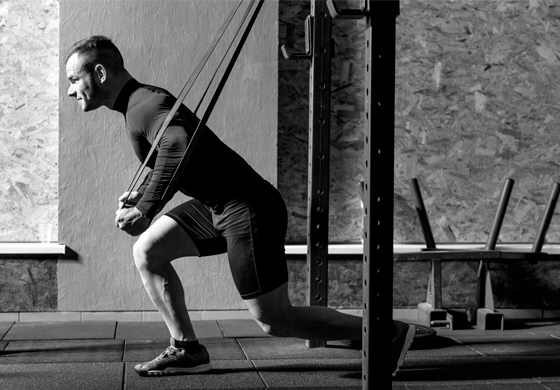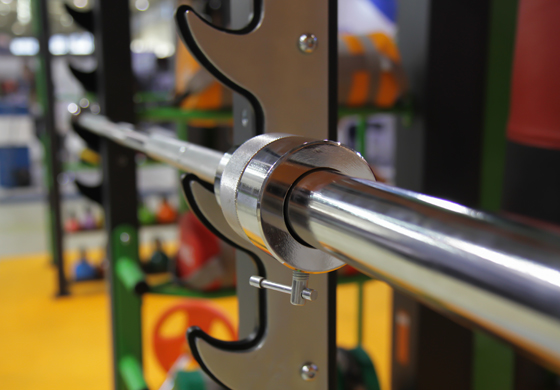Resistance training and transfer to sport movement: we all have a decent answer

Box Squat vs. Free Squat: The Difference Coaches Forget
January 8, 2018
Programming for Sport Athletes: A valuable lesson learned
January 8, 2018Almost any phrase that starts with “You have to do…” usually is misguided when it comes to training sport athletes. Really the only thing that athletes NEED to do is truly practice the movement patterns of their position in a reactive environment, but that is a topic for another day. Besides general concepts like training the special strengths (which are done even with olympic lifting and VBT of powerlifts), absolute strength, repetition method, box squats, front squat, etc. there are ENDLESS ways to weight train that will yield benefits on the sporting field. The key is that inherent abilities (of the sporting task) will always be the determining factor of one’s success as success is determined by what occurs on the field. Few people watch Antonio Brown stem a cornerback perfectly into a speed turn and cut behind him to make a toe-tapping diving catch in the back of the endzone to win a game and say “that must be because of his ability to perform the power clean and achieve perfect triple extension” (which is a debatable topic at that). NO. We look at that and try to wrap our brain on how he has the ability to move so effectively within the sporting environment and react to the chaos of the game almost effortlessly. What mode of resistance training that he performs is most likely irrelevant. Is the resistance training essential? Yes. By no means is this an argument against resistance training. This post is merely a way to understand how resistance training from trainer to trainer, coach to coach, team to team, etc. can be completely different, yet, be effective for each situation.
What needs to be understood are the similarities between resistance training modes that yield effective transfer. The barbell velocity and ground reaction forces of various modes are what matter. Jumping with a trap bar at X speed will be similar enough to an olympic movement at X speed FOR SPORT ATHLETES that will develop physiological abilities to aid in sport movement. The reality is that very few movements performed with a barbell or in a weight room is at all like a true sporting movement. It is extremely difficulty to get transfer specifically without actually being at a field, court, mat etc. So, however the stimulus is provided to the body (assuming it is a beneficial stimulus) essentially does not matter. One big issue I feel that occurs is the thought of the “need” for olympic lifting for athletes. An important note to understand is that the motions and body positions undergone during the olympic lifts will never be seen in sport. So to say that one NEEDS to perform them is misguided. Just as if I were to say that trap bar jumps NEED to be in a program or box squats NEED to be in a program is misguided. If a coach does not meet the criteria laid out in the next paragraph, then despite the mode being a NEED, it should not be done.
 If coaches do not have the ability or knowledge to coach and apply the olympic lifts (like myself) then they should not try impose them on their athletes especially because of the minimal amount of transfer there is to sporting movement anyway. I am not here to bash the olympic lifts. Hell, I wish I had the knowledge to coach them and and skill to do them. It doesn’t come that easy to me. So I focus on what I do know; the Squat, bench, OHP, Push press, trap bar deadlift, and linear sprinting ability. I have seen success with this in athletes but again, this is not the only way.
If coaches do not have the ability or knowledge to coach and apply the olympic lifts (like myself) then they should not try impose them on their athletes especially because of the minimal amount of transfer there is to sporting movement anyway. I am not here to bash the olympic lifts. Hell, I wish I had the knowledge to coach them and and skill to do them. It doesn’t come that easy to me. So I focus on what I do know; the Squat, bench, OHP, Push press, trap bar deadlift, and linear sprinting ability. I have seen success with this in athletes but again, this is not the only way.
The mode that VBT for special strengths is used should be based on 3 things;
• Can you as a coach perform it
• Can you as a coach successfully coach it
• Do you have the necessary time and resources needed to apply it?
Whether this is applied to the Olympic lifts, powerlifts, VBT, Triphasic Method, Dynamic Method, Sprinting for acceleration, sprinting for Max Velocity, Force-Velocity Profiling, etc. if these three questions can be answered with “yes” than that is the route you should take.
Lastly, movement is not a universally term. The movements performed during sport are not the same that will be in a weight room during training as any lift is performed strictly and vertically while a high percentage of the movements seen in sport are only similar, horizontal, and lateral. Biomechanical principles of intramuscular force application change when the ground reaction force is acting to move the body in space compared to when it is stationary. There are neuromuscular abilities that are developed pertaining to manipulation of joint moments throughout the body that can 1. Only be trained by performing them and 2. Can not be done in the weight room. So, training the special strengths (absolute, strength speed, speed strength and explosive strength) are known to have a correlation with more efficient movement, not a cause, a correlation. It is misunderstood that sprinting ability is heavily reliant on ground contact time and has more to do with leg stiffness and the ability to produce large impulses during each step, rather than then moving the legs faster or farther. How does olympic lifting, powerlifting, VBT, etc. help with that? It doesn’t. Sprinting correctly helps sprinting and it does not matter how much one squats or snathches if they cannot properly apply force into the ground or have high leg stiffness.
Now, the reason that many modes of resistance training can accomplish the same end, and that we are all “decently” right, is that there are success and failure examples from all modes of training. So while a method may work for the athletes and situation one is in, it may be a failure for another. We all know the athletes who come in and work their ass off in the weight room and are great on the field. This is a perfect world and what coaches want to happen with every athlete. But, we also know the guy, with the same training program, who performs great in the weight room, but cannot produce to the highest level playing the sport. We also know the athletes who just get by on average with you training, with success and are incredible within their sport. Even though they do not train to the quality of the weight room guy, they are still the better “athlete.” At the end of the day, coaches need to decide on what special strength and qualities aid the most sport, and focus on developing those, whether that be olympic lifts, powerlifts, etc.. We are all “decently” right as true transfer to sport is minimal from the weight room as inherent ability to play the sport plays such a large role. If we can decide on what aspects of performance we feel are best for the athletes in front of us, the mode to which that happens can be completely different and still yield the same success!



